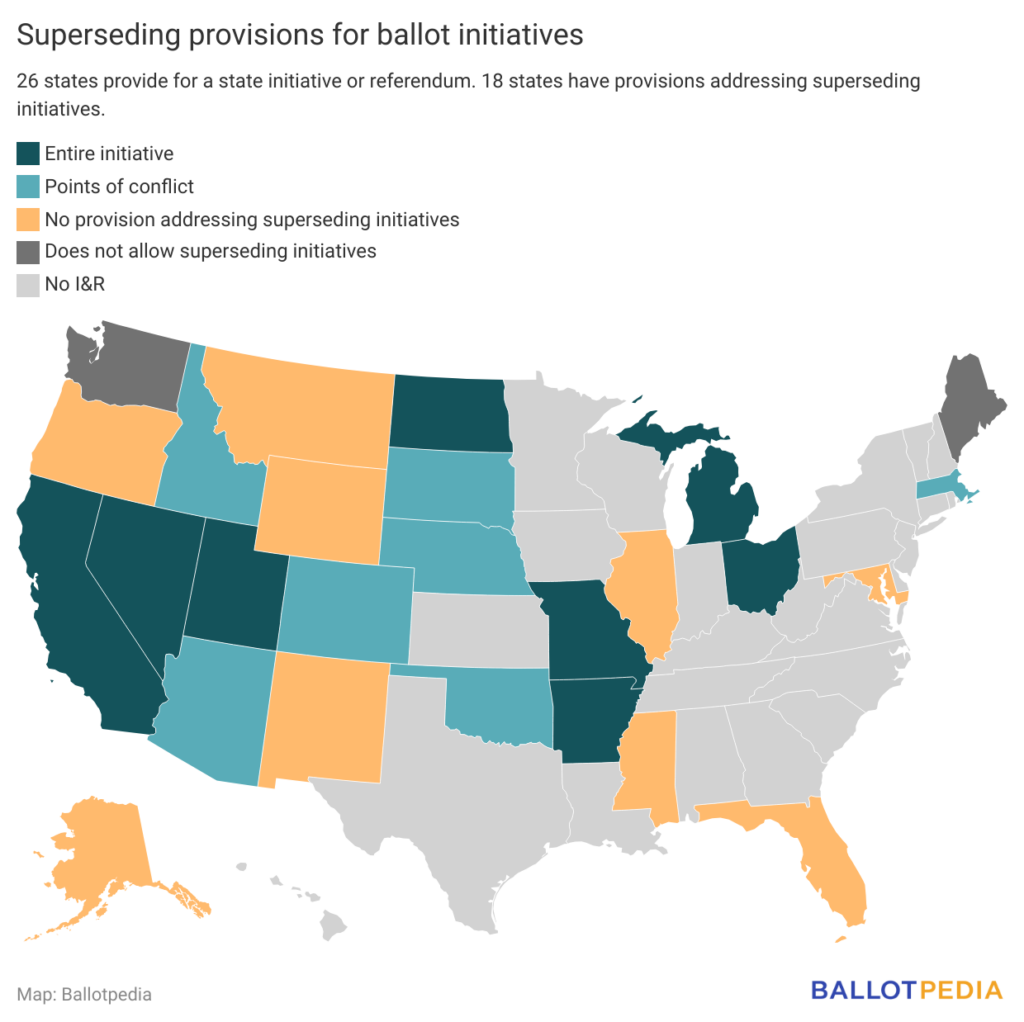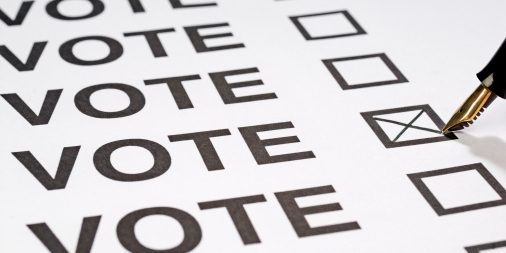On Nov. 5, 2024, voters will decide on two sets of competing ballot measures: two in Nebraska related to abortion, and two in Arizona related to electoral systems.
Two or more initiatives may qualify for the same ballot but conflict with one another. Constitutional amendments affect statutory measures but not vice-versa. When both are statutes, or both are constitutional amendments, they are considered competing ballot measures. And in some instances, voters may approve both competing ballot measures. Some states have processes where only one of the measures will take effect while the other does not. The initiative that prevails is considered the superseding initiative.
What conflicting measures are on the ballot this year?
Voters in Nebraska will decide on competing ballot measures on abortion. Initiative 434 would prohibit abortions after the first trimester, except for medical emergencies or cases related to rape or incest. Initiative 439 would establish a "fundamental right to abortion until fetal viability, or when needed to protect the life or health of the pregnant patient." Polling indicates that both have support of around 45%, with around 15% undecided.
In Nebraska, when two conflicting measures are approved, the measure with the most affirmative votes supersedes the other one at points of conflict. Secretary of State Bob Evnen (R) said, "[T]his November general election ballot will host two ballot measures that appear in direct conflict with each other, which could be the first time this has happened in Nebraska’s history." He said Gov. Jim Pillen (R) would be responsible for determining whether there is a conflict per state law. The competing measures are also significant because this is the first time voters anywhere will decide on conflicting abortion-related ballot measures on the same ballot.
Voters in Arizona will decide on two constitutional amendments related to electoral systems—Proposition 133 and Proposition 140. Republicans in the Arizona State Legislature voted to place Proposition 133 on the ballot, while Proposition 140 is a citizen-initiated ballot measure from the Make Elections Fair PAC. Proposition 133 would add the existing system of partisan primaries to the Arizona Constitution. Proposition 140 would require primaries in which candidates, regardless of partisan affiliation, appear on a single ballot and a certain number advance to the general election, such as top-two or top-four primaries. These two systems contradict.
In Arizona, when two ballot measures of the same type (both are constitutional amendments) contradict and both pass, the measure that receives the most votes would supersede the other at points of conflict. However, determining those points of conflict could require the courts. Barry Markson, a legal analyst for KTAR, said, "It definitely could result in litigation, and I wouldn’t be surprised if it did. My expectation would be that the now-losing proposition would say that although part of the referendum was in conflict with the other, not the entire thing was. They may try to have part of their initiative stay."
In instances where two ballot measures that conflict are approved, what happens?
Seventeen out of the 26 states with initiative processes have statutory or constitutional provisions addressing conflicting ballot measures. Eight states provide that the entire ballot initiative that received the most affirmative votes will supersede the competing initiative. In seven states—including Arizona and Nebraska—the initiative with the most votes will supersede the competing initiative on any points of conflict. In both Maine and Alaska, the ballot must be organized so that voters can decide between the two or neither.

The last time there were two competing initiatives on a statewide ballot was in 2018, when Missouri voters decided on two measures related to marijuana, Amendment 2 and Amendment 3. Voters approved Amendment 2, but rejected Amendment 3.
Additional reading:


